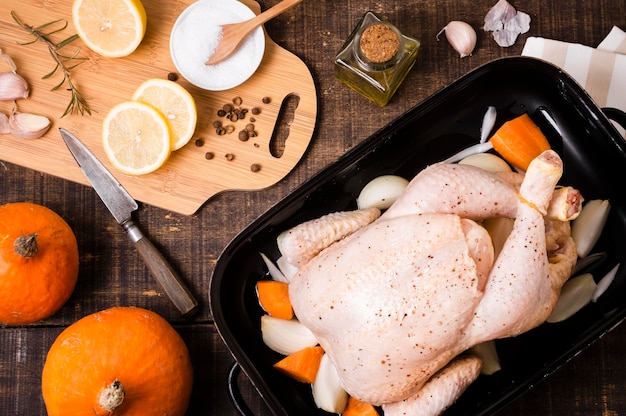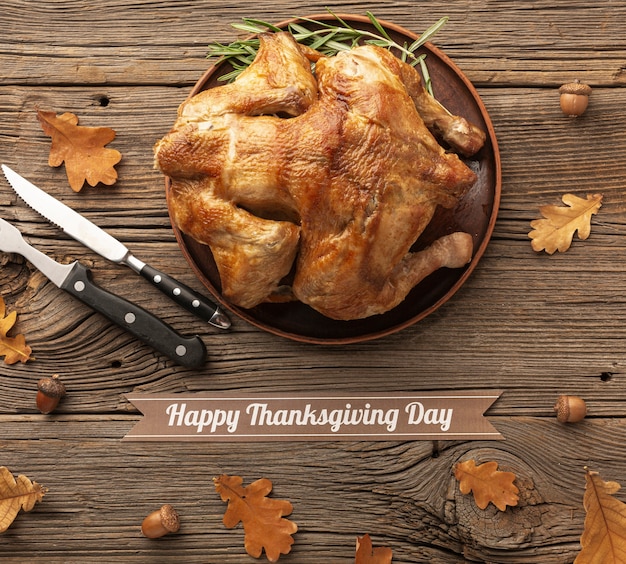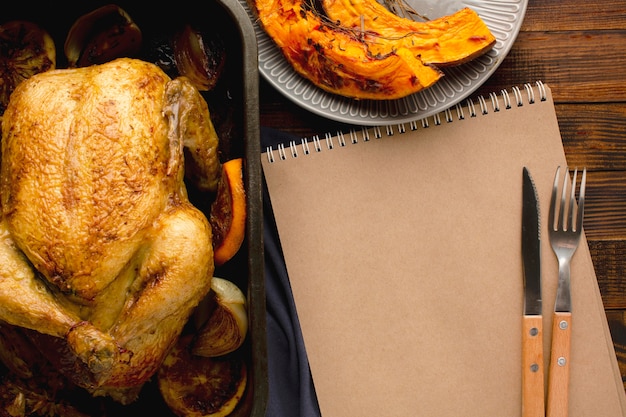Thanksgiving. Just the word conjures up images of warm, golden-brown turkey, hearty stuffing, and the joyful sounds of family laughter echoing through the house. It's a time for togetherness and delicious food, and the star of the show is undoubtedly the turkey.
But let's be honest, cooking a turkey can be a bit nerve-wracking, especially if you're new to it. And the biggest question on everyone's mind is always: how long do I cook it? That's where I come in. This is your ultimate guide to turkey cooking times, packed with my personal experience and tips to make sure your bird is perfectly cooked, juicy, and flavorful.
The Art of the Turkey Roast: It's Not Just About Time
Before we dive into the numbers, let's talk about the factors that influence turkey cooking time. This isn't just about shoving it in the oven and hoping for the best. It's about understanding the nuances that can make the difference between a dry, disappointing bird and a Thanksgiving masterpiece.
1. Size Matters: Big Bird, Big Commitment
You know the saying: "the bigger they are, the harder they fall." It's true for turkeys too! A small turkey will cook faster than a hefty gobbler, so it's essential to weigh your bird before you start. Don't just rely on the packaging - those estimates can be wildly off.
2. Temperature is King: Finding the Sweet Spot
We're talking about oven temperature here, folks. A hotter oven will cook your turkey faster, but too high a heat can lead to a dry, tough bird. We'll get into the ideal temperature in a bit, but it's crucial to remember that this is a key factor in timing.
3. Stuffing or Not Stuffing: A Decision with Consequences
Stuffing adds to the overall cooking time, as it needs to reach a safe internal temperature too. So, whether you're stuffing your turkey or opting for a separate dish can significantly impact how long your bird needs to cook.
4. Age Matters: Young vs. Old
Just like humans, young turkeys cook faster than older ones. This is because the muscle fibers are less developed in younger birds. If you're lucky enough to get a young turkey, you can expect a slightly shorter cooking time compared to an older bird.
(Part 1) Cracking the Code: Understanding turkey weights

Now, let's get practical. The weight of your turkey is the starting point for figuring out your cooking time. I always recommend weighing your turkey yourself before you start, just to be sure. It's a good habit to get into, and it can save you from a lot of Thanksgiving stress!
1. The Big Boys: 16-20 Pounds
These are the hefty turkeys that truly make a statement at the Thanksgiving table. Perfect for large families, they'll keep everyone satisfied, but they also require more patience in the kitchen.
2. The Mid-Range: 12-15 Pounds
This is the sweet spot for many families. It's a good balance of meat without being overwhelming. You can confidently feed a decent-sized crowd with this size bird.
3. The Compact Crew: 8-11 Pounds
For smaller gatherings or if you're not looking for a week's worth of leftovers, these smaller turkeys are a great option. They're also perfect for testing out your turkey roasting skills without a huge commitment.
(Part 2) Time is of the Essence: General Cooking Times

Alright, let's get down to business - the cooking times. But keep in mind that these are just guidelines. Every oven is different, so pay close attention to your bird and don't be afraid to adjust the timings as needed.
1. The Unstuffed turkey
16-20 pounds: 3-3.5 hours
12-15 pounds: 2.5-3 hours
8-11 pounds: 2-2.5 hours
2. The Stuffed Turkey
16-20 pounds: 4-4.5 hours
12-15 pounds: 3.5-4 hours
8-11 pounds: 3-3.5 hours
(Part 3) The Art of the Roast: Oven Temperature and Turkey Placement

So, you've got your turkey and you've got a rough idea of how long it'll take. Now, let's talk about the oven, which plays a crucial role in creating that perfect Thanksgiving centerpiece.
1. The Sweet Spot: 325°F (160°C)
This is the temperature I always recommend for roasting a turkey. It's low enough to ensure even cooking throughout the bird, while still being high enough to get that beautiful crispy skin we all crave.
2. The Right Spot: The Middle Rack
Place your turkey on the middle rack of your oven, ensuring it's not touching any sides. This allows for even heat circulation around the bird, ensuring that it cooks evenly.
(Part 4) The meat thermometer: Your Culinary Hero
We've all been there - slicing into the turkey only to find it's still pink inside. It's a Thanksgiving nightmare! Don't let this happen to you. Invest in a meat thermometer, it's your best friend in the kitchen.
1. The Safety Zone: 165°F (74°C)
The internal temperature of your turkey should reach 165°F (74°C) for safe consumption. This ensures that any harmful bacteria are eliminated. Check the temperature in the thickest part of the thigh, avoiding any bones.
2. Don't Overcook It!
While it's crucial to cook your turkey to the right temperature, overcooking can lead to a dry, tough bird. We want that juicy, flavorful turkey, so aim for the target temperature but don't go overboard.
(Part 5) The Resting Ritual: A Crucial Step
Before you carve that turkey, let it rest! I know it's hard to wait, but trust me, it's a crucial step.
1. Why Rest?
Resting allows the juices to redistribute throughout the turkey, resulting in a more succulent bird. It also helps the meat relax, making it easier to carve without it falling apart.
2. How Long to Rest?
Aim for at least 15-20 minutes, but 30 minutes is ideal. Cover the turkey loosely with foil to keep it warm while it rests.
(Part 6) Let's Talk Brining: Enhancing Flavor and Juiciness
Now, let's talk about a technique that can really elevate your thanksgiving turkey: brining. Brining involves soaking the turkey in a saltwater solution, which helps retain moisture and adds flavor.
1. The Benefits of Brining
Moistness: Brining helps prevent the turkey from drying out during cooking, resulting in a juicy, tender bird.
Flavor: The salt in the brine penetrates the meat, enhancing the natural flavors of the turkey and making it extra flavorful.
2. Brine Recipe: A Simple Yet Effective Method
Ingredients:
1 gallon of water
1 cup of kosher salt
?? cup of brown sugar
Optional: herbs like thyme, rosemary, or bay leaves
Instructions:
Combine the ingredients in a large pot and bring to a boil, stirring until the salt and sugar are dissolved.
Let the brine cool completely.
Place the turkey in a large container or brining bag (ensure it's big enough to hold the bird) and pour the brine over it.
Refrigerate for 12-24 hours.
(Part 7) The Turkey's Final Journey: roasting time!
You've got your turkey prepped, your oven is set, and now it's time to put all those tips and tricks into practice. Here's a step-by-step guide to roasting your turkey:
1. Preparing the Turkey
Pat it dry: Use paper towels to thoroughly pat dry the turkey inside and out. This helps the skin get crispy.
Season it: Season the turkey generously with salt, pepper, and any herbs or spices you like. I love a simple blend of rosemary, sage, and thyme, but feel free to get creative.
Stuff it (optional): If you're stuffing the turkey, stuff it loosely to allow for even cooking. Make sure to cook the stuffing to a safe internal temperature of 165°F (74°C).
2. The Roasting Process
Preheat oven: Preheat the oven to 325°F (160°C).
Place the turkey: Place the turkey in a roasting pan with the breast side up.
Roast: Roast the turkey according to the cooking times mentioned earlier, checking the internal temperature with a meat thermometer.
Basting: Baste the turkey with pan juices every 30-45 minutes for a beautifully browned and flavorful bird. This helps keep the turkey moist and adds a delicious crust to the skin.
3. Resting and Carving
Rest: Remove the turkey from the oven and let it rest for 15-20 minutes before carving. This allows the juices to redistribute for a more tender, flavorful bird.
Carve: Use a sharp knife to carve the turkey. Start by carving the breast meat, then the legs and thighs.
(Part 8) The Aftermath: Leftovers and Storage
You've cooked the perfect turkey, and everyone's full of delicious Thanksgiving goodness. But what about those inevitable leftovers? Don't despair, leftover turkey is a gift that keeps on giving!
1. Storage Tips
Refrigerate promptly: Store leftover turkey in the refrigerator within 2 hours of cooking.
Separate and seal: Place the turkey meat in airtight containers to prevent freezer burn.
2. Leftover Magic: Turning Turkey into Deliciousness
turkey sandwiches: A Thanksgiving classic for a reason! Add some cranberry sauce, stuffing, and gravy for a truly satisfying sandwich.
turkey soup: Warm and comforting on a cold day. Use leftover turkey, broth, vegetables, and spices to create a delicious, hearty soup.
turkey salad: Perfect for sandwiches, wraps, or salads. Combine leftover turkey with mayonnaise, celery, onion, and your favorite seasonings.
(Part 9) thanksgiving feast: A Moment to Cherish
The Thanksgiving feast is a time for family, friends, and delicious food. It's a moment to cherish, and a beautifully roasted turkey is the perfect centerpiece for this special occasion.
1. Setting the Table
Create a warm atmosphere: Use festive decorations, like pumpkins, fall leaves, and candles, to set the mood for your Thanksgiving feast.
Make it personal: Include family photos, handmade decorations, or special items that represent your thanksgiving traditions.
2. The Thanksgiving Feast: A Celebration
Share the love: Gather around the table and enjoy the fruits of your labor. Let the laughter fill the room and savor the moment.
Make memories: Create memories that will last a lifetime. Take photos, share stories, and express gratitude for the people in your life.
FAQs: Answering Your Turkey Cooking Questions
1. Can I Cook a frozen turkey?
Yes, you can cook a frozen turkey, but it will take longer. Defrost the turkey in the refrigerator for 24 hours for every 5 pounds of weight. Make sure the turkey is completely thawed before cooking.
2. What If My Turkey is Overcooked?
If you overcook your turkey, it will be dry and tough. It's best to avoid overcooking, so carefully monitor the temperature and don't let it go past 165°F (74°C).
3. How Long Can I Keep Leftover Turkey?
Leftover turkey can be stored in the refrigerator for 3-4 days. You can also freeze leftover turkey for 2-3 months.
4. What If My Turkey is Undercooked?
If you suspect your turkey is undercooked, it's crucial to cook it further to ensure safety. Use a meat thermometer to check the internal temperature. If it's below 165°F (74°C), cook it for longer until it reaches the safe temperature.
5. What Are Some Common Mistakes People Make When cooking turkey?
Overcrowding the oven: This can lead to uneven cooking and a dry bird.
Not checking the internal temperature: This is crucial for ensuring the turkey is cooked through and safe to eat.
Not letting the turkey rest: This can result in a dry and tough bird.
Now, armed with all this knowledge, you're ready to confidently tackle your Thanksgiving turkey. Remember, it's all about enjoying the process, embracing the traditions, and creating delicious memories together. Happy Thanksgiving!
Everyone is watching

Corn on the Cob: The Ultimate Guide to Perfectly Cooked Ears
Healthy MealsAh, corn on the cob. Just the name evokes images of sunny days, barbecues, and that sweet, juicy flavour that ...

Scallops: The Ultimate Guide to Perfect Cooking
Healthy MealsAh, scallops. Those delicate, sweet, and utterly delicious morsels of the sea. They hold a special place in my...

Spaghetti Squash: The Ultimate Guide to Cooking and Serving
Healthy MealsRemember that time you saw spaghetti squash at the supermarket, looking all bumpy and strange, and thought, "W...

Salmon Cooking Times: Perfect Guide for Every Recipe
Healthy MealsLet me tell you, cooking salmon is an art form. It's all about getting that perfect balance: juicy and tender,...

Ham Cooking Time: How Long to Bake, Smoke, or Boil a Delicious Ham
Healthy MealsAh, ham. It's a classic, isn't it? A real crowd-pleaser, especially around holidays. And when done right, it'...
